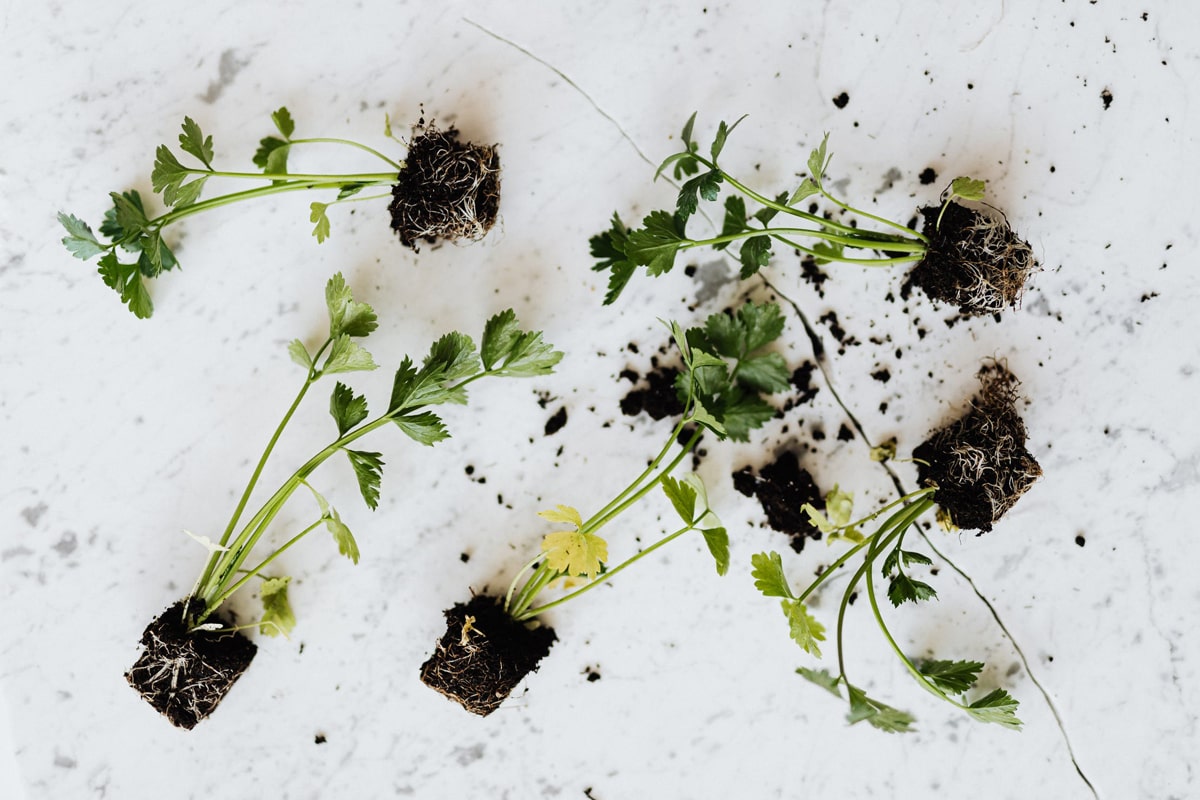Herb gardening makes a terrific hobby for beginner gardeners because growing these plants is virtually effortless. It’s okay to make mistakes when you’re doing something for the first time; just learn from your mistakes, so your plants grow healthy and strong!
Contents []
Tips for Indoor Gardening with Kids
-
Forgetting to Research
Starting with High-Maintenance Herbs
Growing the Wrong Varieties
Forgetting to Prep the Soil
Letting Aggressive Herbs Invade the Garden
Treating Herbs like Houseplants
Doing Away with the Regular Trimming
Harvesting the Mature Leaves
Letting Herbs Go to Flower
Mixing Different Herb
Common Mistakes New Herb Gardeners Make and How to Avoid Them
Growing an herb garden can be so easy. And if you are new to herb gardening, here are some common mistakes you should know and avoid:
Forgetting to Research
If you are new to gardening, you have two choices: growing herbs from seed or buying starter plants. The choice will depend entirely on you. No matter what choice you make, be sure to know the different herbs you will grow.
Different herbs have different germination rates and growing requirements. Many things could go wrong when growing different herbs, especially if you’re building a windowsill garden or an indoor garden. So do your research, get to know different herbs, and find out which ones are best grown in your garden.
Starting with High-Maintenance Herbs

Herbs are generally easy to grow, but some are more high-maintenance than others. Basil, oregano, chives, mint, sage, and dill are very beginner-friendly. These herbs don't take much effort to grow, and they're tough to kill. Basil, in particular, is always used as a trainer herb because it’s a resilient, fast grower. Lavender, coriander, lemongrass, on the other hand, need more babying. These are not the best choice if you have zero gardening experience.
Growing the Wrong Varieties
It’s exciting to think about the many different herbs you can grow in the garden but wait, which varieties to get? There are over 120 varieties of basil and 600 varieties of mint. Are you sure you’re growing the right variety? You might grow spearmint instead of Mojito mint for your mojitos or creeping thymes instead of lemon thyme.
It’s essential to think about the herbs that you’d get a lot of use for because these plants require regular pruning. You’d be filling your pantry with fresh herbs pretty soon, so it’s best to think about the herbs that you can maximize. It’s equally important to be familiar with the flavor of the herbs you want so you can pick the right herbs.
Forgetting to Prep the Soil

Herbs need nourishing soil to grow strong and healthy. You’re not supposed to use just any soil. The soil has to be prepped first to make sure it has the right nutrient profile for growing different herbs. Using soil that’s been depleted of nutrients may cause the herbs to lose flavor or grow leggy. Adding compost to the soil is essential. Be sure to use well-draining soil like potting soil. Herbs hate standing water, so the soil texture should be fluffy, never dense.
Letting Aggressive Herbs Invade the Garden
Most herbs do not grow too big, but some grow aggressively to the point that they’ll become invasive. Mint and oregano, for example, grow so quickly that they’ll be quick to spread all over the garden. That’s fine if you love these herbs, but if you’re growing different plants, mint and oregano overgrowth could crowd other plants. One way to avoid this is to grow herbs in pots and giving them more room to grow. You can also grow the herbs in pots and bury them in the ground so the roots won’t spread all over and stifle nearby plants.
Treating Herbs like Houseplants
Although most herbs are easy to grow, they’re far from regular houseplants, so these should never be treated like houseplants. Most herbs will require regular watering, especially during the summer season. If you are growing herbs in pots, use well-draining soil because herbs hate standing water. Some houseplants are fine growing in shady areas, but most herbs need the full sun, so be sure that the conditions are suitable for growing herbs.
Doing Away with the Regular Trimming
We cannot stress this enough; herbs need regular trimming to thrive. Regular trimming encourages new growths, maintains their shape/size, and increases the yield. If you’ve been doing away with the regular trim, herbs could grow too tall and top-heavy.
Harvesting the Mature Leaves
Large, older leaves seem like the best ones to get during a harvest, but bigger isn’t always the best. For one thing, the larger, more mature leaves help accelerate the growth of your herbs. They would become too top-heavy and flop over. Tender new growths are tastier than mature leaves.
Letting Herbs Go to Flower
Letting the herbs grow flowers will alter their flavor! Unless you are growing edible flowers, cut back the herbs before they start growing flowers. Sweet basil, for example, will turn bitter when they develop flowers. That’s why it’s important to trim the herbs regularly; you want the herbs to focus on growing leaves, not flowers.
Mixing Different Herb
Variety might not be a good thing for certain herbs. If you want to give companion gardening a try, it’s vital to check which herbs grow well with other herbs. Fennel and cilantro, for example, do not grow well together. They can damage each other's roots and inhibit growth. Dill and lavender don't mix because they require different soil pH. Avoid mixing herbs with varying needs of watering because you might end up drowning some of the plants.

Herb gardening is beginner-friendly but to be successful at it, you need to know the different growing requirements of various herbs. As long as you avoid these common mistakes, you can grow a fantastic herb garden and harvest fresh herbs to season everyday dishes!



